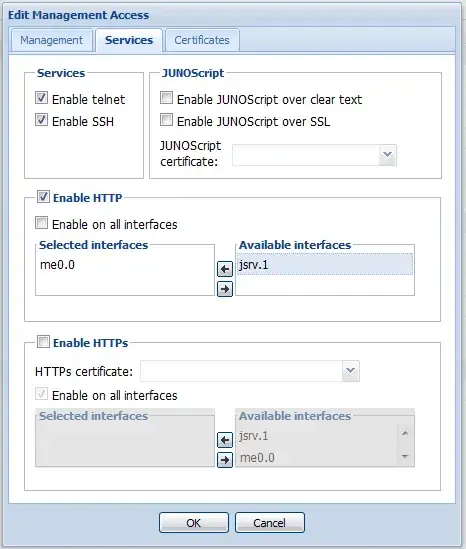Interface jsrv.1 is always associated to IP address 128.0.0.127.
jsrv up up
jsrv.1 up up inet 128.0.0.127/2
An archive at SourceForge has the below command output snippet that shows a connection between 128.0.0.127 and port 6343 (sFlow port)1:
tcpdump -v udp port 6343 -s 1500:
11:52:07.624977 IP (tos 0x0, ttl 254, id 5728, offset 0, flags [none],
proto UDP (17), length 1484)
10.1.1.1.60578 > collector.6343: sFlowv5, IPv4 agent 128.0.0.127,
agent-id 17, seqnum 38496, uptime 1963373233, samples 8, length 1456
flow sample (1), length 196,
<...snipped...>
There is a Juniper Knowledge Center (cached google link) article that indicates there are 2 separate programs supporting the sFlow function, an agent and a collector.
The sFlow monitoring system consists of an sFlow agent embedded in the
EX Switch and has a centralized collector. The sFlow agent’s two main
activities are random sampling and statistics gathering. It combines
interface counters and flow samples and sends them across the network
to the sFlow collector. The sFlow collector uses the sFlow agent’s IP
address to determine the source of the sFlow data. This KB article
explains how the EX Switch assigns the IP address to the sFlow agent.
The jsrv interface appears to be a built-in Juniper sFlow sub-system that allows communication between the internal collector and agent.
1Note, this is the only connection to 128.0.0.127 I've been able to locate.
